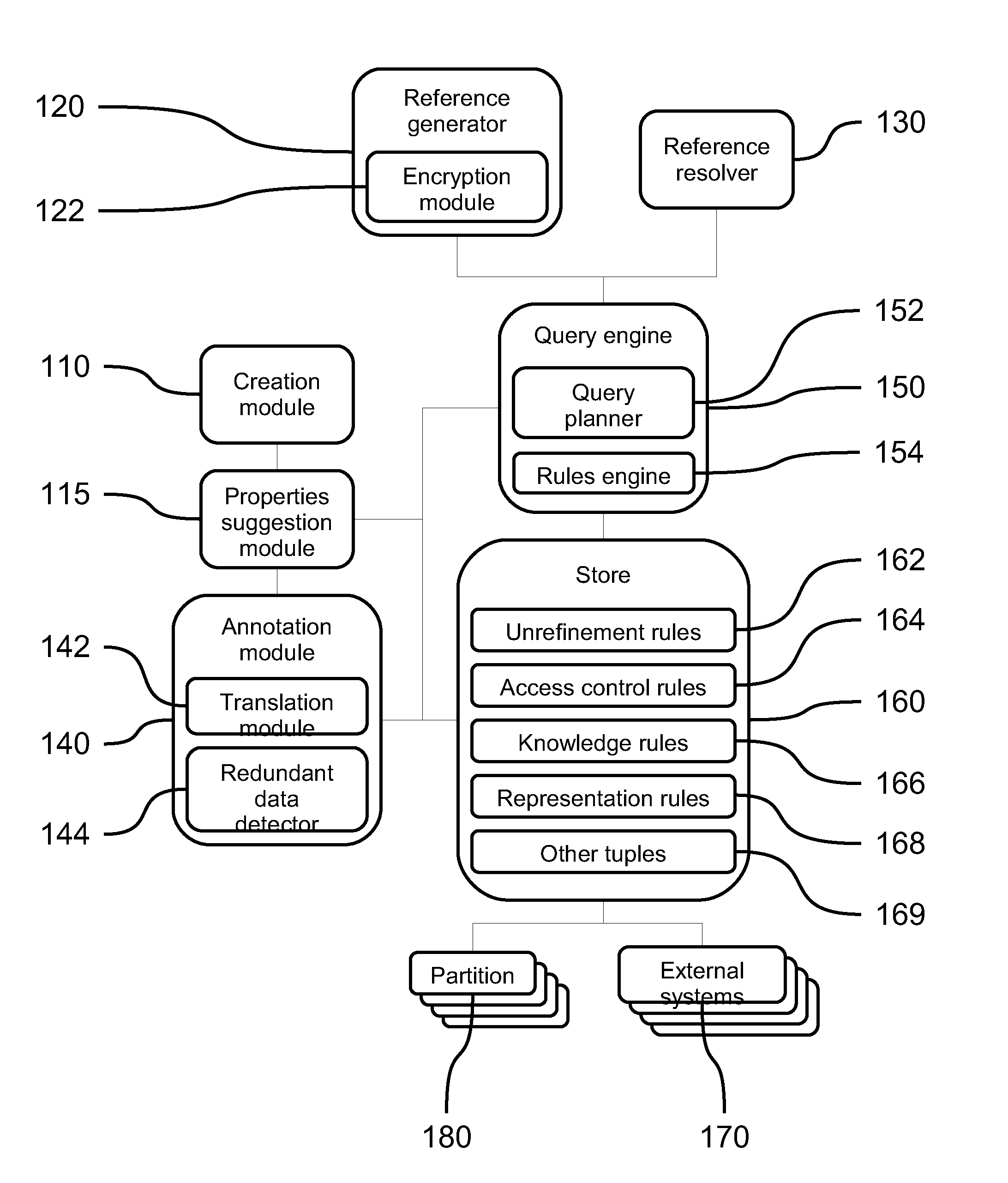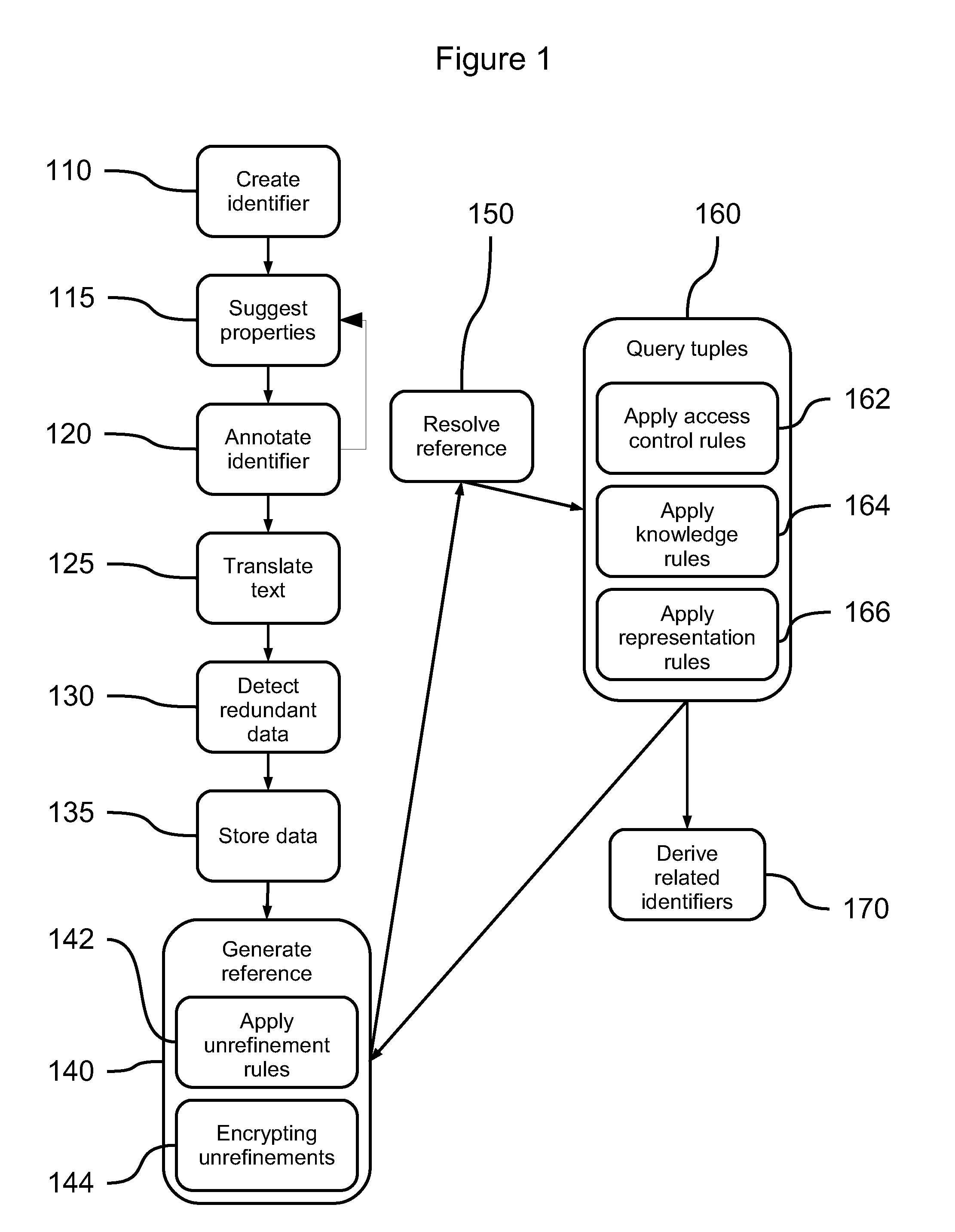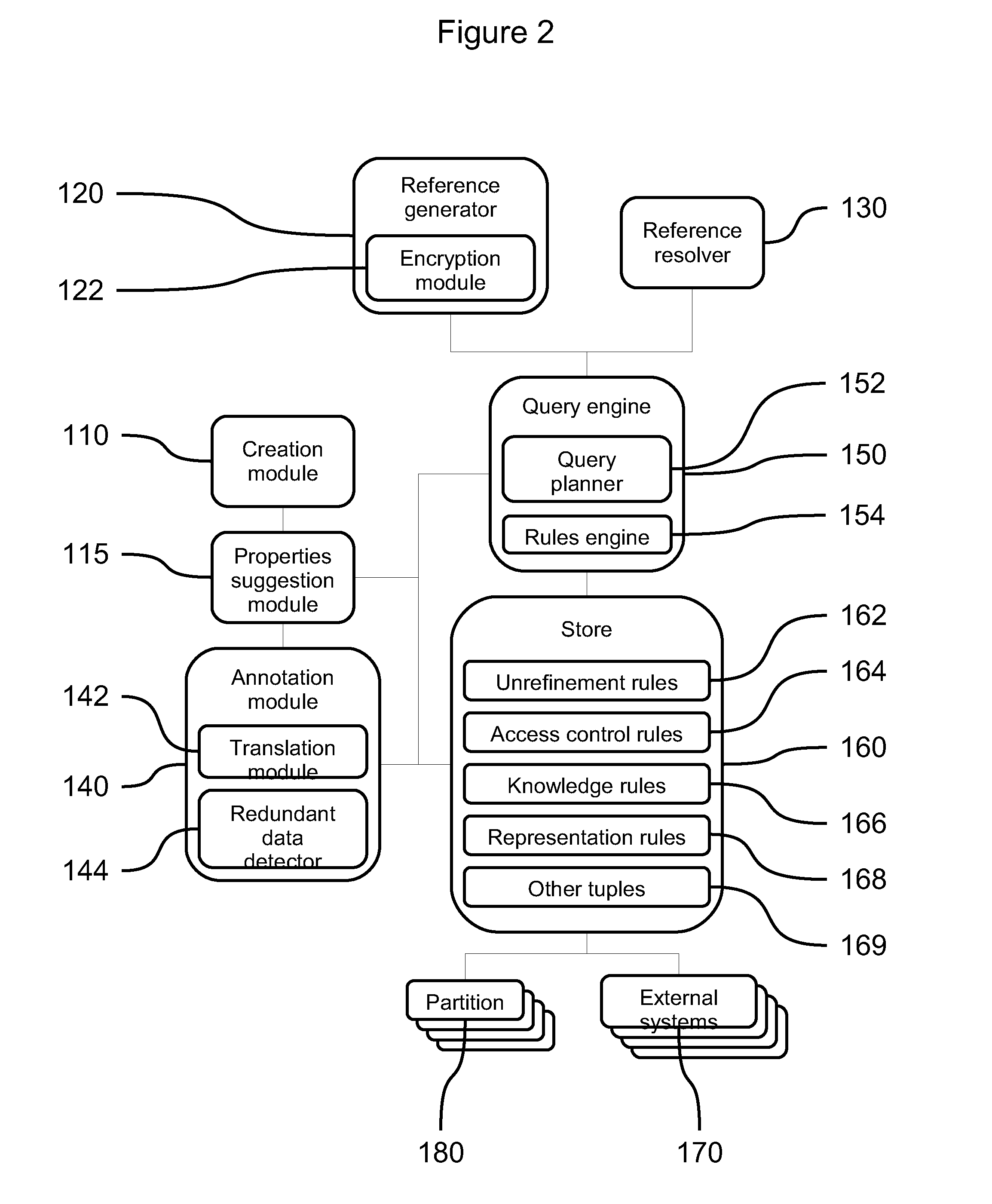Collaborative, Incremental Specification Of Identities
a technology of identity and incremental specification, applied in the field of information processing, can solve the problems of linking vulnerable to confusion about what, content keywords are too specific or too general for efficient searches or integration at varying degrees of precision, and the link is too broad for efficient search or integration, etc., to achieve the effect of reducing ambiguity and increasing the precision of content retrieval and processing
- Summary
- Abstract
- Description
- Claims
- Application Information
AI Technical Summary
Benefits of technology
Problems solved by technology
Method used
Image
Examples
Embodiment Construction
[0062]In the description that follows, the present invention will be described in reference to embodiments that provide contextual keyword-based access control. More specifically, the embodiments will be described in reference to collaborative, incremental specification of identities. However, the scope of the invention is not limited to any particular environment, application, or specific implementation. Therefore, the description of the embodiments that follows is for purposes of illustration and not limitation.
[0063]These example embodiments comprise an information system with least one computer with a processing components operable to perform the steps performed by the embodiment. Typical embodiments perform steps on multiple components, and storage is performed by multiple storage components.
[0064]In step 110 in FIG. 1, a user or a component creates an identifier, also referred to as a SID. Initially, the SID can be naked in the sense that it has no statements that reference it...
PUM
 Login to View More
Login to View More Abstract
Description
Claims
Application Information
 Login to View More
Login to View More - R&D
- Intellectual Property
- Life Sciences
- Materials
- Tech Scout
- Unparalleled Data Quality
- Higher Quality Content
- 60% Fewer Hallucinations
Browse by: Latest US Patents, China's latest patents, Technical Efficacy Thesaurus, Application Domain, Technology Topic, Popular Technical Reports.
© 2025 PatSnap. All rights reserved.Legal|Privacy policy|Modern Slavery Act Transparency Statement|Sitemap|About US| Contact US: help@patsnap.com



